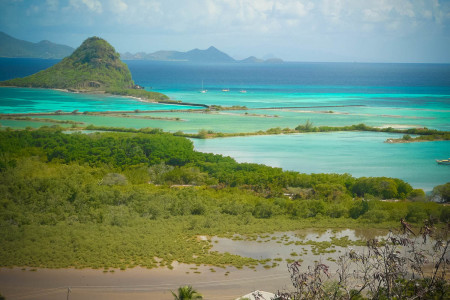
A long-awaited moment of renewed hope came for the people of Union Island, St. Vincent and the Grenadines last month with the launch of the Ashton Lagoon Restoration Project. The largest bay in the Grenadines, Ashton Lagoon included the largest mangrove habitat on the island and had long been a popular fishing and recreational area for local families. Seriously damaged by a failed marina development 20 years ago, on-the-ground work has now begun to restore the lagoon.
The launch event, organized by the Sustainable Grenadines Inc. (SusGren), a local non-profit conservation organization, in collaboration with the Ministry of Agriculture, Rural Transformation, Forestry, Fisheries and Industry saw more than 100 people in attendance representing various sectors of the island community and government departments and ministries.
The launch ceremony featured brief remarks from supporting agencies and a large billboard showing the vision for the restored Ashton area. The road to this new beginning was rocky and challenging, but amidst the many obstacles encountered along the way SusGren remained optimistic. They have been the driving force behind this initiative with support from BirdsCaribbean, championing the cause for restoration efforts for over 10 years.
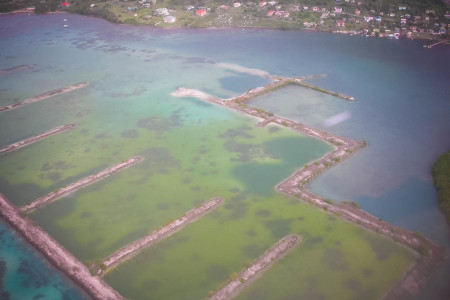
“The process, which involved lobbying with government for permission to proceed and holding talks with various government agencies and donors, was long but we never gave up, and we are happy to have received permission from Cabinet earlier this year,” said Mr. Martin Barriteau, Special Advisor to SusGren.
The Ashton Lagoon Restoration Project was initiated as a result of the negative environmental impacts caused by a failed marina development in 1994. The Marina Project proposed to join Frigate Rock to Union Island, construct a 300-berth marina, a golf course in the mangrove area, and large condominiums, but was abandoned in 1995. Not all local people were in favor of the project, which destroyed pristine marine habitats, vital to the livelihoods of local fishers and enjoyed by tourists and locals alike.
Ashton Lagoon, located on the south coast of Union Island in the Grenadines, is the largest bay in the Grenadines and was unique in that it contained all the primary components of a mangrove/seagrass/coral reef ecosystem, including a long stretch of outer reefs, a shallow protected inner lagoon, abundant seagrass beds within the lagoon, tidal mud flats, salt ponds, and the largest continuous mangrove habitat in the region. Because of its rich biological diversity and ecological importance for the entire coast of Union Island, the lagoon was designated a Marine Conservation Area and protected under The Fisheries Act of 1986. The area was also designated an Important Birding Area (IBA), supporting a large variety of resident and migratory herons, egrets, shorebirds, seabirds and landbirds.
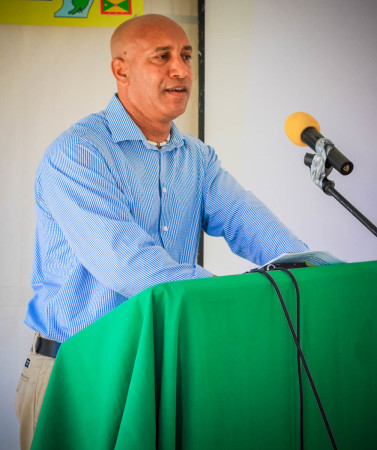
Despite its protected status, a foreign developer was given permission to proceed with the project. An environmental assessment pointed out that the development would cut off water circulation to the bay, causing catastrophic damage to reefs, seagrasses and fisheries. Nevertheless the project proceeded, with exactly the predicted results. After dredging the lagoon and building the causeways and marina berths, the developer went bankrupt and disappeared, leaving behind the damaged bay.
Impacts from the failed development included stagnant polluted water in the lagoon and marked declines in marine life and the health of the mangrove. It was not just the news of a failed marina that troubled the islanders but the glaring sight of, “the worst environmental disaster in all of St.Vincent and the Grenadines” said Director of Grenadines Affairs, Mr. Edwin Snagg.
The once fishing haven was no more, the family fun areas for picnicking and swimming were gone also, the passage way to ease fishers journey to their fishing grounds was cut off, and the calm turquoise waters of the lagoon where coconut and gum boats once sailed were now murky and stagnant.
“Fortunately, the wetland that has been damaged here in the past can be restored, but it is essential that restoration projects benefit the local community and also include training and education, and must always work with governments to implement policy changes to ensure that the developments does not affect environmentally sensitive areas like this one,” stated Chief Fisheries Officer Mrs. Jennifer Cruickshank Howard who delivered remarks on behalf of the Ministry of the Agriculture.
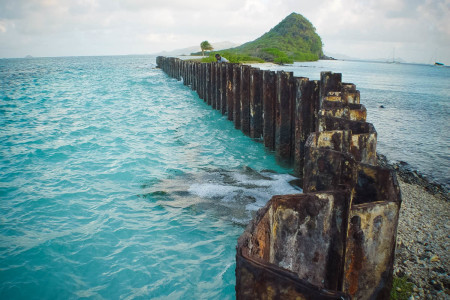
The idea for the restoration was born in 2004 when Lisa Sorenson from BirdsCaribbean (then the Society for the Conservation and Study of Caribbean Birds) visited the island and held a Wetlands Education Training Workshop for local educators in partnership with SusGren. Sorenson, Barriteau and other local stakeholders discussed the potential to restore the lagoon and its biodiversity, and decided to pursue funding to plan and carry out the work.
Since then, with grant support from the US Fish and Wildlife Service, The Nature Conservancy and others, a series of participatory planning workshops were held to discuss the community’s vision for the area and how it could be restored for sustainable use, such as bird and heritage tourism.
The workshops also analyzed why the ill-conceived plan to develop a massive project in a sensitive protected area was able to proceed in the first place. “Unfortunately, this is an all too common occurrence in the Caribbean,” noted Sorenson, citing the ongoing controversial proposal to build a port and logistics hub in the Portland Bight Protect Area in Jamaica. The participatory planning report included recommendations for how to avoid a similar tragedy in the future.
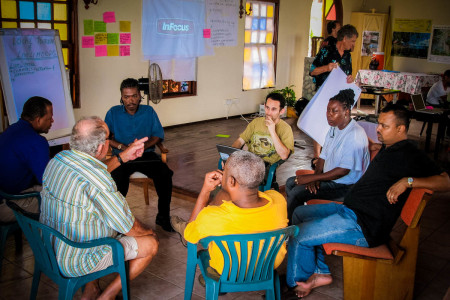
The goal of the Ashton Lagoon Restoration Project is to restore life to the lagoon including the mangroves, coral reefs, seagrass beds, birds, fish and other marine life, whilst providing opportunities to develop sustainable livelihoods. The restoration works will focus on restoring hydrology and tidal flushing in the lagoon. This will be accomplished through removal of sections of the existing causeway and corroding steel sheet piles, which will reestablish natural circulation in the lagoon.
SusGren will continue their long-term program of monitoring water quality and bird populations at the site through participation in the Caribbean Waterbird Census. They will also focus on community outreach and education to bring about awareness and appreciation of the links between the environment and sustainable livelihoods and the importance of using our natural resources wisely among the general public, stakeholders and government officials.
Finally, the project will develop sustainable tourism and livelihood opportunities for local people, including developing a boardwalk and bird watching stations, and training interpretive bird guides through BirdsCaribbean’s Caribbean Birding Trail project. “We are looking forward to the day when locals and visitors alike will be able to walk into the lagoon to enjoy the spectacular birds that visit the area.” commented Barriteau.
The launch unveiled a billboard which depicted three different scenarios of the area. The first showed the area of the abandoned Marina, the second highlighted the projected areas for restoration work, while the third portrayed a depiction of what the area is likely to become after the planned restoration work is completed. This was the scene that stimulated much interest at the launch. Proposed uses and opportunities included birding watching, nature trails, kayaking, paddle boarding, kite surfing, snorkeling, scuba diving, mooring fields, education and research, and a fisheries protection zone. Restoration and rebirth will be the interpretive theme for the area.
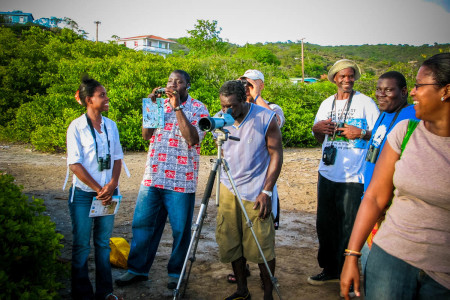
Sorenson commented, “After many years of perseverance and hard work, we are beyond excited that the ecological health of this area will soon be restored and beautiful once again, including clear waters, healthy mangroves and salt ponds, and more abundant marine and bird life.” She added, “I believe this restoration will be the first of its kind in the Caribbean. If successful, it will serve as a shining example of how a major environmental disaster can be reversed with positive outcomes for nature and people.”
About SusGren and the Project Partners
The Sustainable Grenadines Inc (SusGren) is a transboundary non-governmental organization (NGO) between St. Vincent and the Grenadines and Grenada committed to the conservation of the coastal and marine environment and sustainable livelihoods for the people of the Grenadines. Partners and supporters of this project include BirdsCaribbean, The Nature Conservancy, the Philip Stephenson Foundation, St. Vincent and the Grenadines National Trust, Global Coral Reef Alliance, AvianEyes, Science Initiative for Environmental Conservation and Education, Ministry of Agriculture, Rural Transformation, Forestry, Fisheries and Industry, Construction Logistics, Inc., Ministry of National Security, Lands and Survey Department, National Properties Limited, National Parks, Rivers and Beaches Authority, Grenadines Partnership Fund, University of New Hampshire, Union Island Environmental Attackers, Union Island Tourism Board, Union Island Association for Ecological Preservation (UIAEP), Union Island Ecotourism Movement, and others.
Additional images by Lisa Sorenson and Juliana Coffey.

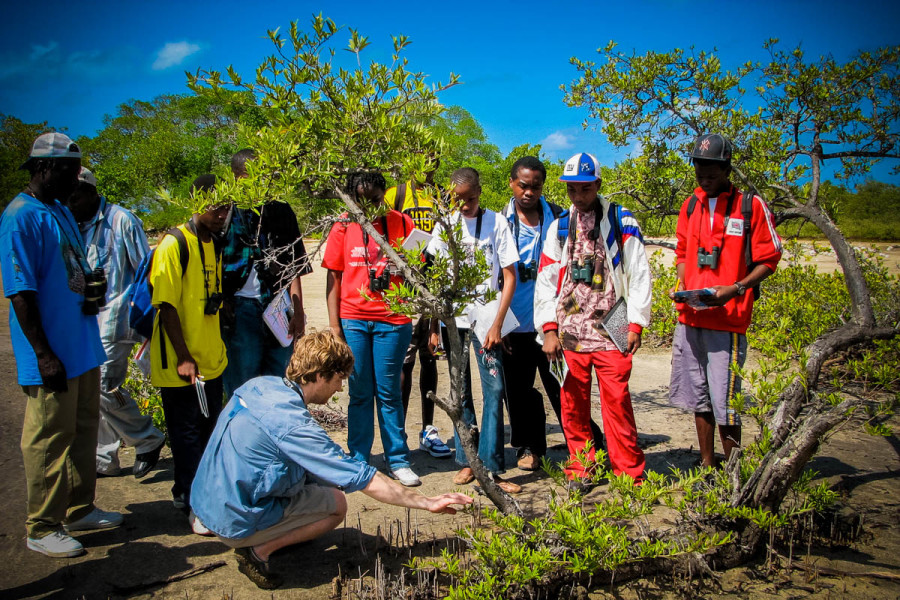
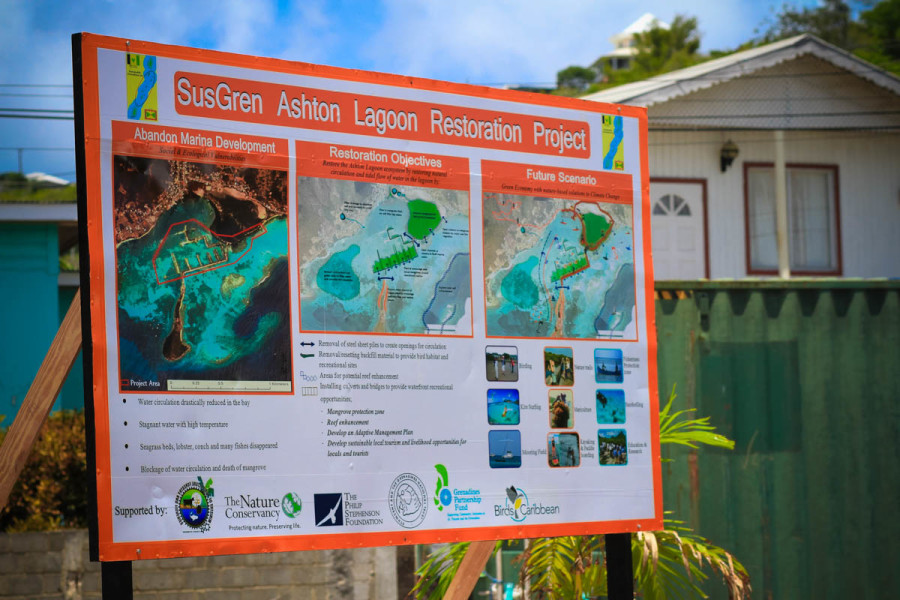
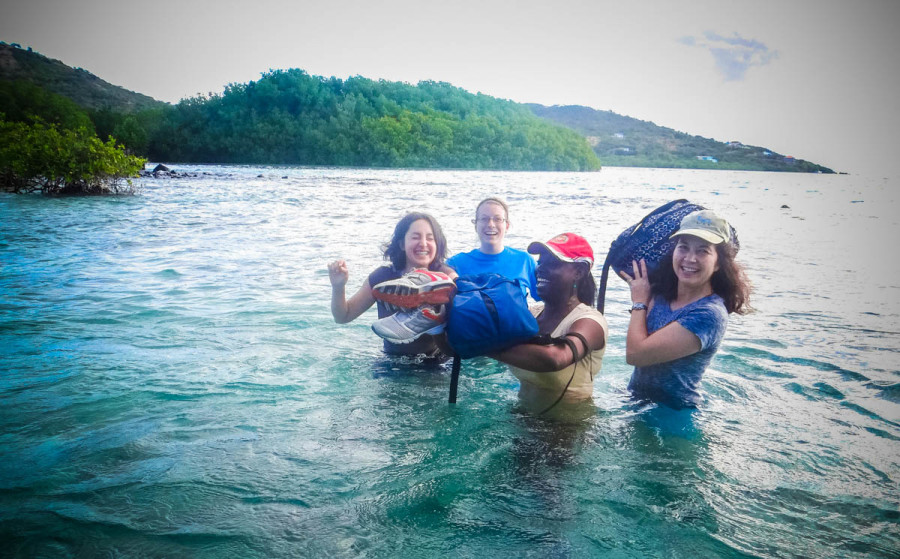
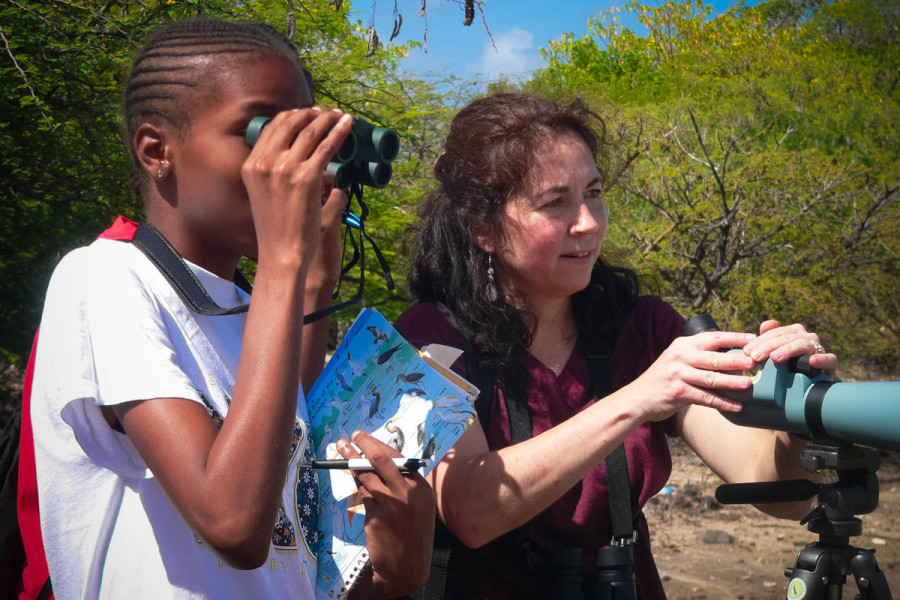
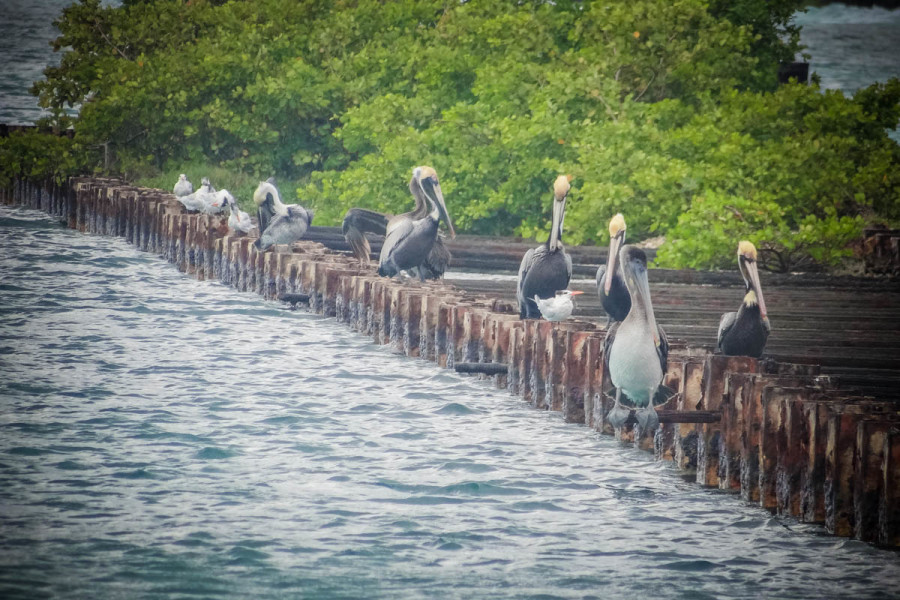
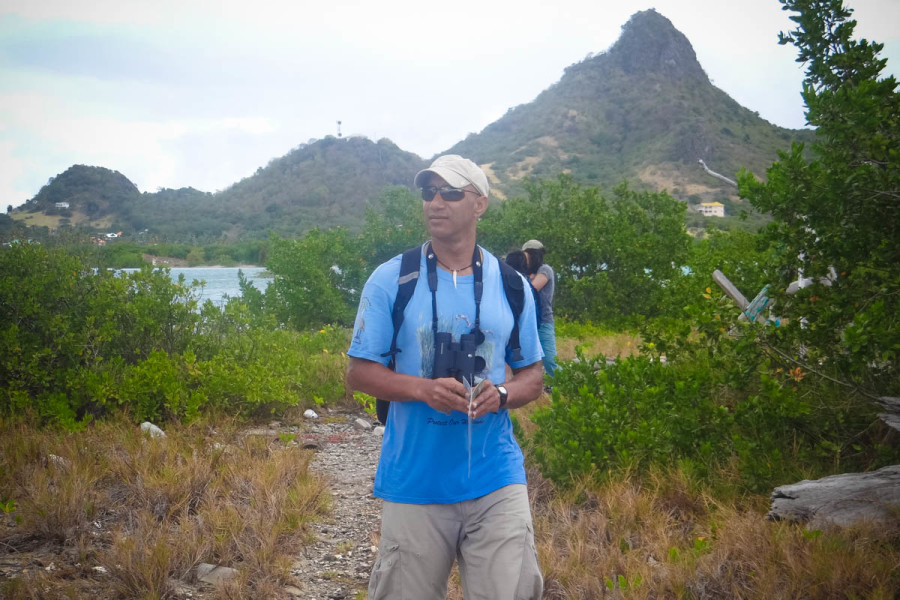
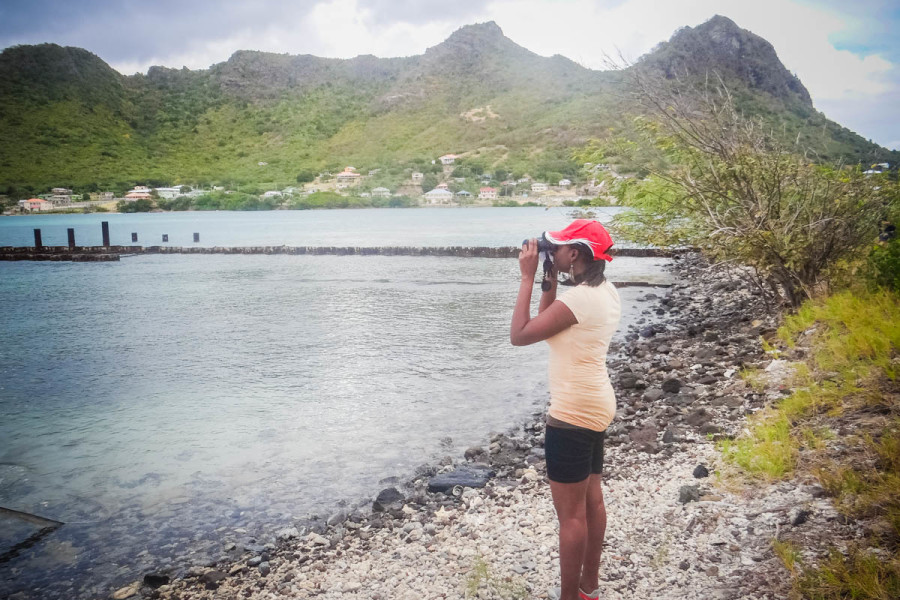
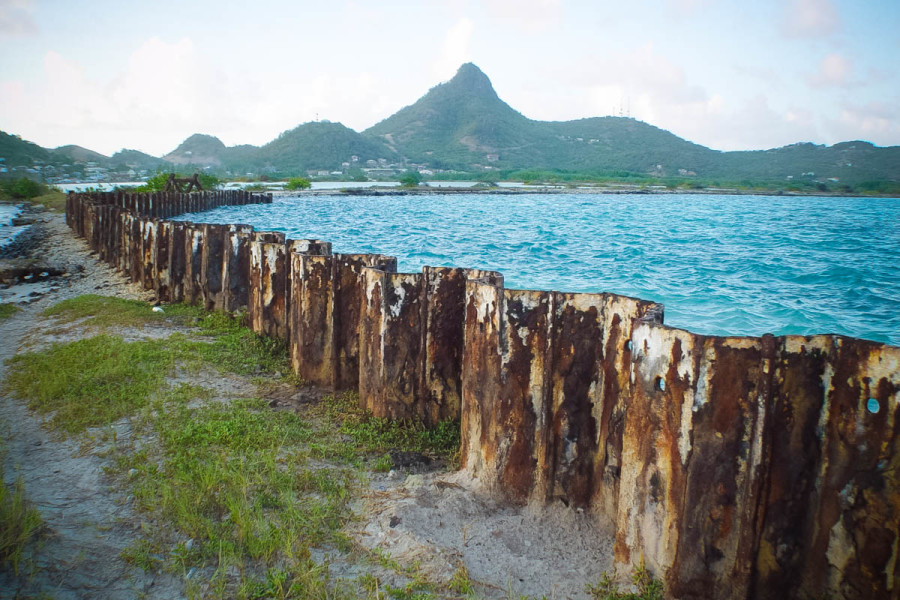
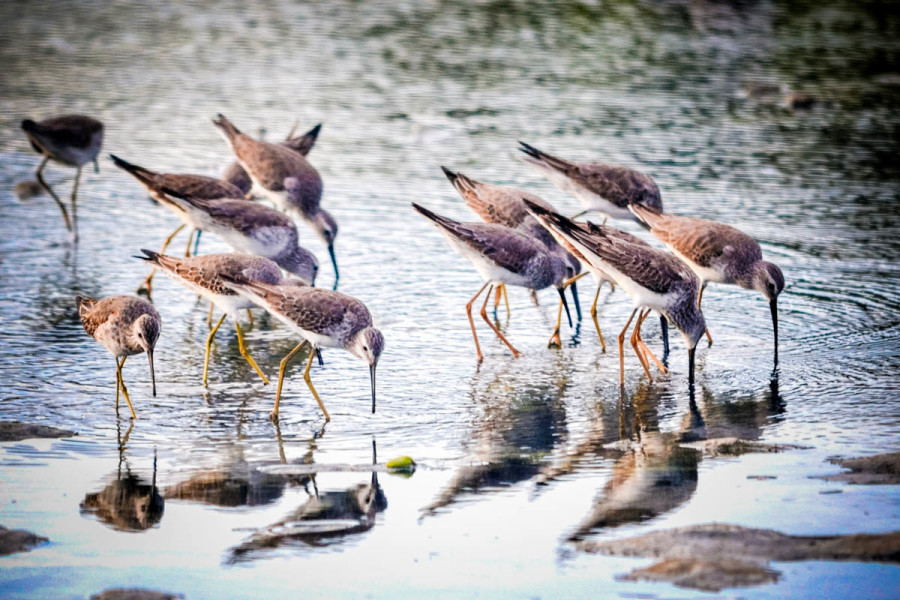
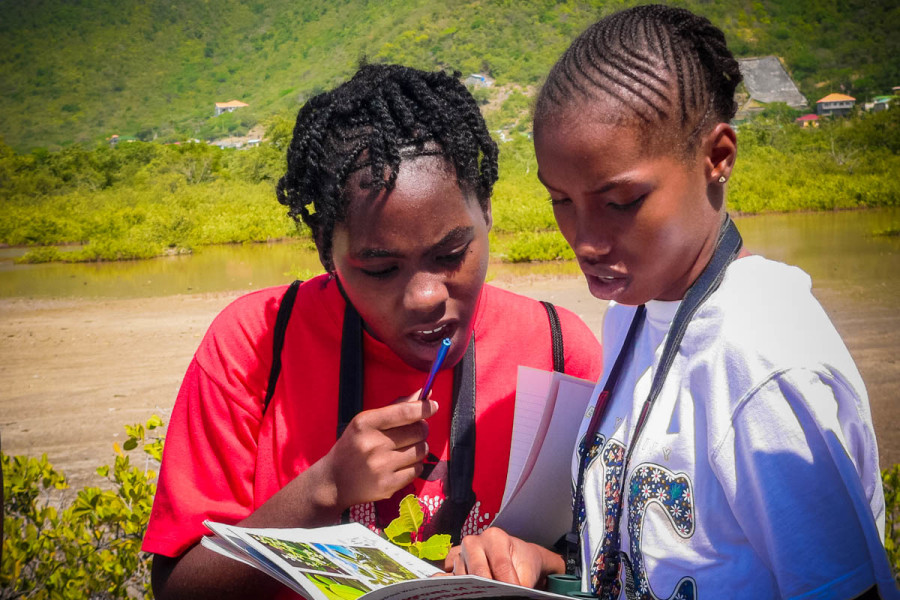
why do you not identify the developer???
Thanks for your interest and good question George! The failed marina development took place many years ago (1994) and I don’t actually know who was responsible. If I find out, I will add this information to the article. Best wishes, Lisa Sorenson